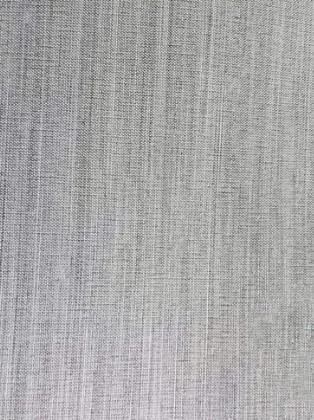The wrinkle resistance of knitted interlining is an important indicator to measure its quality and applicability. Especially in clothing manufacturing, interlining is the supporting and reinforcing part of the fabric, and its wrinkle resistance directly affects the appearance and wearing experience of the finished product. Knitted interlining is usually made of synthetic fibers such as polyester and nylon through a special weaving process. Compared with woven interlining, knitted interlining exhibits some unique wrinkle resistance due to its fiber interlacing method and structural characteristics.
1. Structural advantages
The wrinkle resistance of knitted interlining is first related to its unique weaving structure. The structure of knitted fabrics is not interlaced vertically and horizontally like woven fabrics, but is formed by the circular structure of warp and weft yarns. This structure makes the fabric more elastic and flexible, and there are more gaps between the fibers, which can better adapt to deformation. When the fabric is squeezed or stretched by external force, the knitted interlining can better restore its original shape and reduce the generation of wrinkles.
2. Material selection
Another key factor in wrinkle resistance is the raw materials selected. Common knitted interlining materials are polyester, nylon, cotton and other synthetic fibers. Polyester fiber has good anti-wrinkle performance because the molecular structure of polyester is stable and has strong anti-deformation ability. Especially polyester knitted interlining that has been treated with high temperature setting can effectively reduce the formation of wrinkles and keep it flat after washing. Cotton or natural fiber knitted interlining is relatively easy to wrinkle, but modern textile technology has been able to add a certain anti-wrinkle effect to natural fibers and improve its performance.
3. Post-treatment process
The anti-wrinkle performance of knitted interlining is also closely related to the post-treatment process. In order to improve the wrinkle resistance of the fabric, manufacturers usually perform a series of post-finishing treatments on knitted interlining, such as heat setting, washable treatment, and the addition of anti-wrinkle finishing agents. Heat setting treatment can fix the shape of the fiber at high temperature, reduce the stretchability and resilience of the fabric, and thus improve the wrinkle resistance. After using the anti-wrinkle finishing agent, a protective film will form on the surface of the interlining, making it easier for the fabric to remain flat and reduce the formation of wrinkles.
4. Practical application
In practical applications, the wrinkle resistance of knitted interlinings is particularly important, especially in some high-end garments or custom-made garments that need to maintain a smooth appearance for a long time. Interlinings with poor wrinkle resistance may cause the finished product to look untidy and require frequent ironing and maintenance. Knitted interlinings with high wrinkle resistance can effectively alleviate this problem and reduce the difficulty of clothing maintenance.
Summary
In general, the wrinkle resistance of knitted interlinings is affected by many factors, including fiber material, weaving Nonwoven Interlining Manufacturers process and post-treatment process. Through reasonable selection and optimization, modern knitted interlinings can achieve a higher wrinkle resistance effect and meet the needs of different clothing fields. In actual production, choosing suitable knitted interlinings can not only improve the comfort and aesthetics of clothing, but also effectively reduce the workload of post-care.

